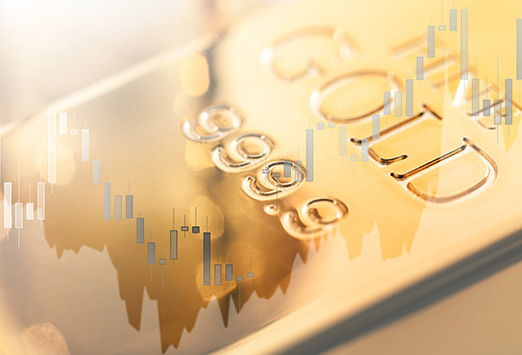
|
Key Takeaways
-
The UK interest rate impacts individuals and businesses by increasing the cost of borrowing. This affects disposable income and can dampen aggregate demand.
-
The relationship between gold prices and interest rates is complex and depends on various factors, including inflation expectations, liquidity concerns, economic growth, and geopolitical events.
-
Investing in gold during periods of rising interest rates may outperform other assets negatively affected by higher borrowing costs.
- The relationship between gold and interest rates is context-dependent, and investors should carefully consider various factors when making investment decisions.
|
The UK interest rate is the rate at which the Bank of England lends money to other banks. This charge, sometimes called “the cost of money,” determines how much individuals and businesses must pay to borrow.
The impact of increases to the interest rate is significant and affects the economy through several channels. The main effect is the increased cost of borrowing. UK businesses and consumers must pay more to take out loans. Higher prices reduce disposable income, dampening aggregate demand, forcing people to allocate more resources to credit repayment, and slowing the expansion of the money supply.
The Historical Relationship Between Interest Rates And The Price Of Gold
Historically, commentators believe that gold prices and interest rates correlate negatively. Gold prices fall when the Bank of England raises interest rates to calm a booming economy (and control UK inflation rates) and rise when it lowers them.
However, the relationship is more complex. A long-term look through historical data reveals no relationship between interest rates and gold. Throughout much of the 1970s, gold prices rose sharply, just as interest rates moved higher. The 1980s saw declining interest rates and a bear market in gold.
Other Factors, Besides The Interest Rate, That Affect The Price Of Gold
That’s because inflation expectations, liquidity concerns, and economic growth also play a role in the price of gold. For instance, when investors expect inflation and low economic growth (as in the 1970s and today), gold becomes a safe-haven asset. Falling yields on stocks combined with seigniorage on cash force them to consider uncorrelated assets that can survive the inflationary storm.
Similarly, liquidity concerns can spark intense demand for gold. If investors fear a “Minsky moment” – a crash in the global financial system – they may also see the benefit in exchanging their bank deposits for precious metals. This way, they can retain liquidity and protect themselves from a banking crisis.
Geopolitical events can also play a role. Physical gold can survive wars, trade embargoes, and other catastrophes, while stocks (and stock exchanges) may not.
Investors see gold as a safe-haven because it generally retains its value in times of economic uncertainty, including rising interest rates. Even if rate rises signal deflationary forces, geopolitical events can trigger buying as investors look for less risky assets to satisfy their risk tolerance preferences.
How Rising Interest Rates Have Affected The Price Of Gold In The Past
Throughout UK history, changes in the interest rate have affected the price of gold. One example is recently from March 2023, when the Bank of England (BoE) and the US Federal Reserve (Fed) raised their key interest rates by 0.25 percentage points to 4.25% and 4% respectively in response to rising inflation pressures, unexpectedly strong economic growth, and good labour market conditions. Gold prices fell as investors began expecting higher interest rates would curb inflation and reduce the appeal of gold as a hedge against it.
Another example comes from the 1990s. During this decade, the UK experienced two periods of high-interest rates: one in 1990-92, when the government tried to keep the pound fixed in the European Exchange Rate Mechanism (ERM), and another in 1998 when inflation rose sharply due to a global financial crisis. In both cases, the price of gold declined after the BoE jacked up interest rates: from an average of £233 per ounce in 1990 to £203 per ounce in 1992, and from £193 per ounce in 1997 to £182 per ounce in 1998.
What Are The Benefits And Risks Of Investing In Gold During Periods Of Rising Interest Rates?
The greatest benefit of investing in gold during periods of rising interest rates is that it may outperform other assets negatively affected by higher borrowing costs. For example, stocks and bonds may decline in value as higher interest rates reduce corporate earnings and increase bond yields.
Another benefit of investing in gold bars and gold coins during periods of high-interest rates is that demand from central banks may increase as they attempt to boost their portfolio reserves. Global economic conditions can force emerging markets to increase their gold positions to protect their wealth from currency depreciation and political instability.
However, there are some risks. These include:
- Declining inflation expectations as base rates ramp up
- Competition from alternative investments, such as Bitcoin, that also serve as inflationary hedges
In summary, the relationship between gold and interest rates is complex and depends on context. While rising rates may lower inflation expectations (and therefore demand for gold), geopolitics and general uncertainty can counteract this effect, leading to surging demand.
















